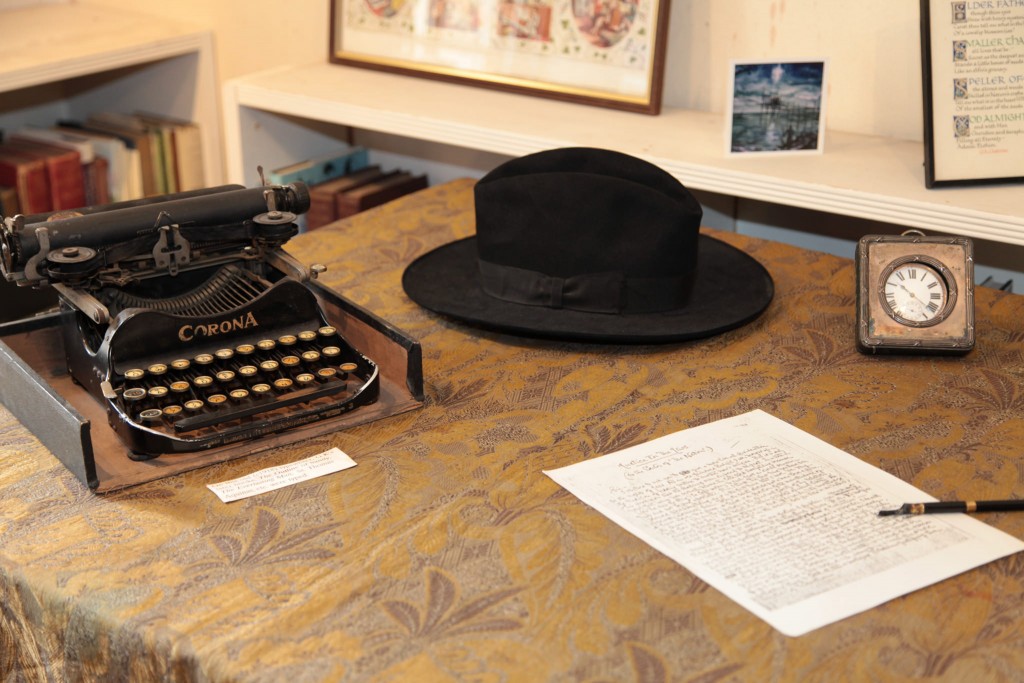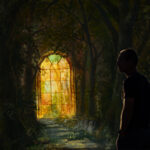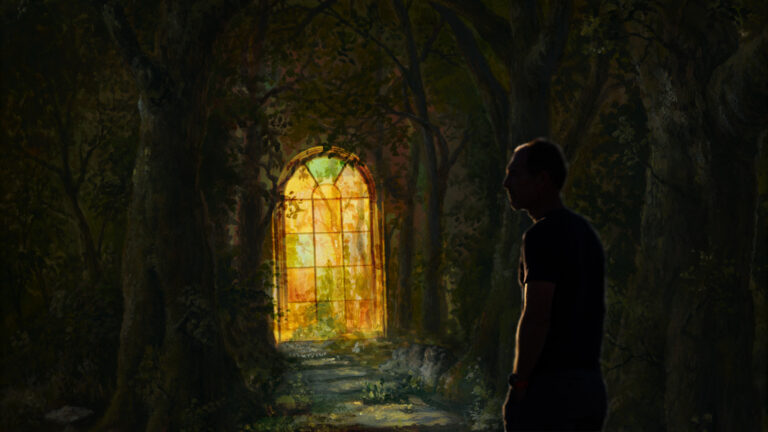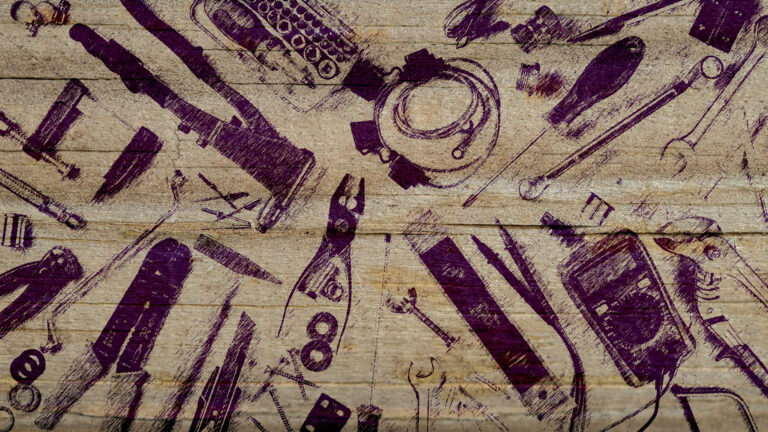This weekend, during our brief visit to London (see the backstory here), I had the chance to visit a few places that I knew would be personally meaningful.
London is full of tourists seeing sights, but I felt more like a pilgrim giving thanks, on a quest to devote time and effort to a couple of men whose gifts have blessed me: C. S. Lewis and G. K. Chesterton.
Beginning in Beaconsfield
We started out by traveling to Beaconsfield, the place where G. K. Chesterton lived for most of his life. It made sense to begin our journey with Chesterton, since Beaconsfield was on the way from London to Oxford, and since Chesterton comes before Lewis, both in the dates he lived and in the spell he cast over him. Of Chesterton, Lewis wrote:
[When] I first read a volume of Chesterton’s essays . . . I had never heard of him and had no idea of what he stood for; nor can I quite understand why he made such an immediate conquest of me. It might have been expected that my pessimism, my atheism, and my hatred of sentiment would have made him to me the least congenial of all authors. It would almost seem that Providence, or some “second cause” of a very obscure kind, quite over-rules our previous tastes when It decides to bring two minds together. Liking an author may be as involuntary and improbable as falling in love. I was by now a sufficiently experienced reader to distinguish liking from agreement. I did not need to accept what Chesterton said in order to enjoy it. . . . For the critics who think Chesterton frivolous or “paradoxical” I have to work hard to feel even pity; sympathy is out of the question. Moreover, strange as it may seem, I liked him for his goodness.
In my own journey of thinking and reading and writing, I have followed the trail from Lewis back to Chesterton, and now I can see the fingerprints of Chesterton all over Lewis’s books. Like Lewis, I have fallen for Chesterton. I love him for the joy and vibrancy that springs up from his writing, for his fearlessness in writing about anything and everything. I love how he crossed the lines of literature and gave us poems, essays, plays, detective stories, novels, and apologetic works. No one but Chesterton serves up so many insights that stretch and spin my mind.
Home of G. K. Chesterton
As we made our way through the narrow streets of Beaconsfield, glancing at the tiny shops and the sidewalks, I thought about Chesterton’s Distributism and his preference for what is local. Chesterton noted the beauty of the small business, he was in awe of the family (father, mother, children) as the center of common grace in our world.
We stopped for a few moments outside of Top Meadow, the house where Chesterton lived from 1922 to 1936. It is right across the street from Overroads, where Chesterton moved in 1909. Top Meadow is a sprawling house that fits the larger-than-life reputation (and size) of G. K. himself. This location is now privately owned, so we didn’t go inside (and we didn’t linger), but in this picture you can see the blue circle above the front door that indicates the origin of this home.

Grave of G. K. Chesterton
Next, we drove down a few side streets to see the final resting place of Chesterton, his wife, Frances, and Dorothy Collins—the secretary who devoted most of her life to transcribing and editing Chesterton’s books.
The morning drizzle had turned into a stronger shower by the time we arrived at the cemetery on Shepherd’s Lane, forcing us to dodge the puddles and mud as we made our way through the old burial grounds in search of Chesterton’s gravestone. I was tempted for a moment to complain about the weather, but then something Chesterton once wrote about rain made me chuckle instead of grumble:
All around me as I write is a noise of Nature drinking: and Nature makes a noise when she is drinking, being by no means refined. If I count it Christian mercy to give a cup of cold water to a sufferer, shall I complain of these multitudinous cups of cold water handed round to all living things; a cup of water for every shrub; a cup of water for every weed? I would be ashamed to grumble at it . . .
If it dims the sky, it brightens the earth. It gives the roads (to the sympathetic eye) something of the beauty of Venice. Shallow lakes of water reiterate every detail of earth and sky; we dwell in a double universe. Sometimes walking upon bare and lustrous pavements, wet under numerous lamps, a man seems a black blot on all that golden looking-glass, and could fancy he was flying in a yellow sky. But wherever trees and towns hang head downwards in a pigmy puddle, the sense of Celestial topsy-turvydom is the same. This bright, wet, dazzling confusion of shape and shadow, of reality and reflection, will appeal strongly to any one with the transcendental instinct about this dreamy and dual life of ours. It will always give a man the strange sense of looking down at the skies.
Standing at the grave of Chesterton (and later that day, C. S. Lewis), I don’t feel the personal loss of a mourner coming to pay personal respects. The deaths are far too distant to strike the chord of sadness or grief. Instead, I stand at these graves with gratitude welling up from within me.
Chesterton’s gravestone stirs up thanksgiving for the richness of this life and how it has blessed me, the insights that have struck me, the laughter and wisdom I have received from this man who used his gifts to bless the world. For 80 years, Chesterton’s body has laid under this sod awaiting resurrection. I am there to say “Thank you, Lord” for this life.

Chesterton Collection
Our next stop was Oxford, where we stopped by a church that had opened up its library and a collection of Chesterton’s artifacts. There, we saw many of Chesterton’s doodles and drawings, locks of his childhood hair, and several rare pictures and artifacts, including his spectacles.

The woman overseeing the collection told me that it’s always the Americans who ask about Chesterton. “Although Americans are in awe of him, Chesterton is something of an embarrassment for the English,” she said, “because people say his ideas were outdated even in his own time.”
It’s sad that society would judge a man not by whether his views were true, but by whether they were sufficiently trendy, as if truth is determined by fashion. But Chesterton wouldn’t be surprised by the self-righteous smugness of those who see new ideas as necessarily better than old realities.
“My attitude toward progress has passed from antagonism to boredom,” he once wrote. “I have long ceased to argue with people who prefer Thursday to Wednesday because it is Thursday.” Perhaps that’s why Chesterton’s work still sparkles and resonates more than a century later, while so many of the “progressives” in his day have receded into irrelevancy.

To Be Continued
Once we finished looking through the library, we made our way toward The Eagle and Child for lunch, where the focus of our day shifted from G. K. Chesterton to his disciple, C. S. Lewis. More on that part of our pilgrimage (with a surprising run-in with Lewis’s stepson, Douglas Gresham) later this week . . .

















